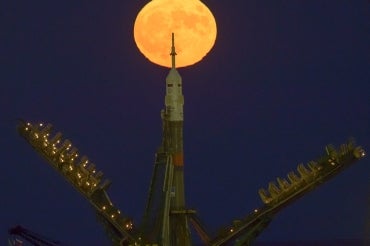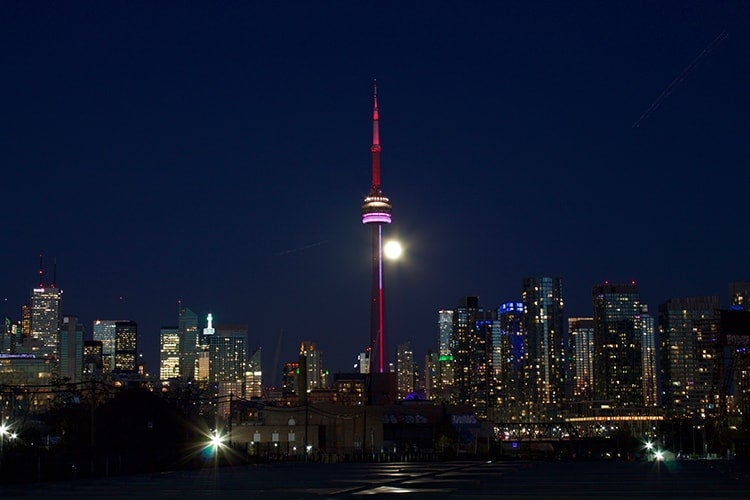Cool while it lasted: U of T astronomer explains science behind "supermoon"

Published: November 15, 2016
If you had a chance to look to the skies this week and take in the magnificent “supermoon,” you may have wondered about the science behind the phenomenon.
U of T News spoke to Renée Hložek, an assistant professor of astronomy in the Faculty of Arts & Science. Hložek, who is also appointed to the Dunlap Institute for Astronomy & Astrophysics, is a TED expert who reaches thousands of people with her videos, making science accessible and fun for the average person.
She thinks the supermoon is a bit overhyped. But, for those of us who usually just gaze in awe, she broke down the science behind it.

The "supermoon" over Toronto Monday (photo by mark.watmough via Flickr)
What is the “supermoon”?
The term "supermoon" just describes the fact that the moon is both a full moon, and is at the point in its orbit that is closest to us. It appears a bit bigger and brighter in the sky, but only around 10 per cent.
It is lovely to see the moon in the sky, but it is sometimes the case that the supermoon is overhyped. For example, the tides will be higher because the moon is closer to us, but lots of questions that I'm getting are about things like the moon and the New Zealand earthquake, which are definitely not related!
The moon will appear a little more orange around sunset as it catches the last of the sun's rays. One of the cool things is that the Earth-moon orbit is actually very close to circular, but it is closer at different times in its orbit. The reason why it is "super" is because it is reasonably rare that the Earth is close and full at the same time – which is why we won't see another moon this close during a full moon until 2048.
What's creating the phenomenon?
The phenomenon is due to the orbit of the moon around the Earth, which changes its distance to us ever so slightly and generates the phase of the moon, which now is full.
The moon looks the brightest near sunset. It always appears bigger when it is near the horizon.
Any other celestial phenomena we should be looking out for in the coming weeks/months?
The Leonid meteor shower is coming up on Nov. 17/18, so that is something to look out for late on the 17th and in the early hours of the 18th. It's fun to see how many shooting stars you can see that night, and to take the chance to enjoy the night sky more generally.



